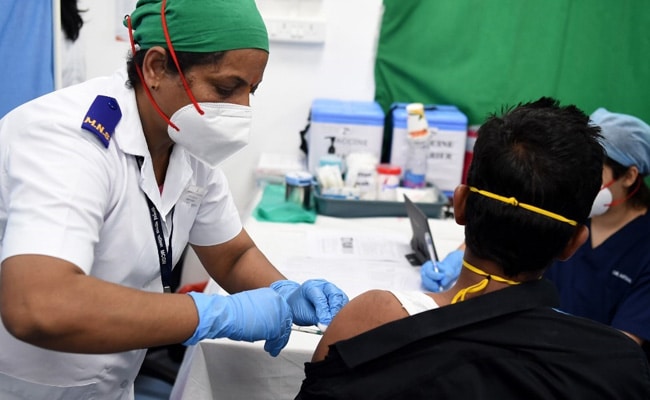[ad_1]

India is the fastest country to reach mark of 4 million vaccinations, Union Health Ministry said (File)
New Delhi:
Eighteen days into India’s vaccination drive, the daily numbers are witnessing a dip again. Over the last week, the vaccination figures have dropped from 5.7 lakh to 1.8 lakh a day. The number of average beneficiaries per site has also slipped from 57 to 49 over the last few days.
On January 28, the average number of beneficiaries per site was 56, the total number of vaccinations was above 5.7 lakh (5,72,074).
On January 31, the average number of beneficiaries per site was 57 – the total number of vaccinations was 14,509.
On February 2, the average number of beneficiaries per site was 49 – down from 54 on February 1. The total number of vaccinations was above 1.8 lakh (1,88,762) – down from Monday’s 1.9 lakh (1,91,313).
The Union Health Ministry on Wednesday declared that India is the fastest country to reach the mark of 4 million vaccinations. It achieved the mark in 18 days. But public health experts say India will have to do a lot more to achieve its target.
Dr Dileep Mavalankar, Director of the Indian Institute of Public Health, said: “If we have to vaccinate 60 crore doses, which is 30 crore people in the next six months, we will have to very rapidly increase the pace of vaccinations. The average pace will have to be 33 lakh doses daily. The government must open more and more vaccination centers, allow more volunteers who are willing to get vaccinated and if government is not able to manage this, private sector should be allowed to vaccinate the citizens.”
On January 30, Union Health Secretary Rajesh Bhushan had told states that there is a “huge scope for improvement in the number of average vaccinations per session” and had asked them to increase the number of vaccination sites.
Soon after, Gujarat increased its vaccination sites from 161 to 510.

Delhi increased its vaccination sites from 81 to 183 and will now vaccinate on six days a week instead of 4.
Vaccination of frontline workers has also begun as scheduled from the first week of February. States like Gujarat, West Bengal and Punjab have already started it and the rest will start by the end of this week.
But government officials admit that the dip in numbers is largely due to vaccine hesitancy and the spike seen earlier was due to introduction of walk-in-vaccinations.
Dr Suneela Garg, advisor to the Indian Council of Medical Research – the nodal organization of the country’s battle against Covid — and Director Professor of Community Medicine at Maulana Azad Medical College said the big numbers initially came because of the “eager people” who were looking for the vaccine and it was available.
“Then gradually vaccine hesitancy has set in and people have a lot of issues. Some don’t want the current vaccines. They are thinking, few more vaccines are coming in soon so it is best to wait,” Dr Garg said.
This hesitancy needs to be addressed at all levels — national, state and district, she said.
“Officials who are managing the vaccination sites also need to be more proactive. They should call up the slotted people a day in advance. If those people don’t plan to come, then call up people from the second list. That way, the team at the vaccination site is fully occupied and all resources are efficiently utilized,” she added.
[ad_2]
Source link